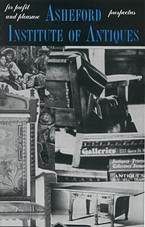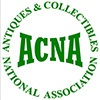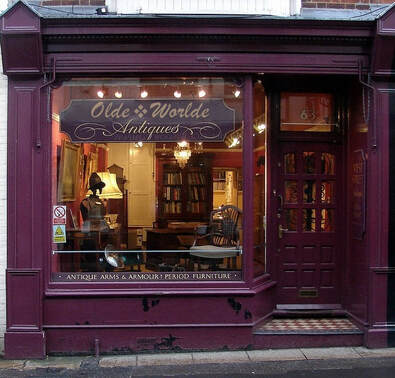 Classic Imagery From A Bygone Era? Classic Imagery From A Bygone Era? Florida - Understanding what's hot and not these days in the antiques market seems to be as perplexing a question as ever. Years ago, the ancient, and likely scholarly owner of the local antiques store was often the go-to resource for what to buy. For fine well established items that would almost certainly accrue in value, Georgian furniture was the way to go. For those less well-heeled, a solid investment in Victorian would likely reap rewards at a later date. For the younger set, primitives were in demand, and all the rage. Fast-forward thirty years, and the quintessential notion of an antiques dealer has undergone a massive make-over. Not just in the sense of image changing inventory, but from the ground-level up. No longer are antiques shops filled with brown wood, and men of academia representing a certain age. Instead, you're just as likely to encounter young hipsters handily working on upcycling old furniture into vibrantly painted colors slated for a showroom floor. For many in the business this change seems almost implausible. The long-standing image of the bespectacled antiquarian hovering over a magnifying glass in a musty old antique shop, has persisted for so long that it's virtually become enshrined as decorative arts lore, and a somewhat de facto representation of the antiques business itself. However, as with any industry, change is bound to happen. Just ask Ahmed Patel, a second-generation antiques dealer from Boston who recalls taking over his father's business fifteen years ago. "I'd pretty much worked alongside him my whole life," says Patel, "but when I finally took the reins, I knew it was going to be a changing of the guard, in virtually every sense of the word." Patel remembers telling his father they should maybe try some new ideas, as shop sales of old European classics had begun to falter by the turn of the century. "He was reticent to change," says the younger Patel, "He just wanted to believe it was a temporary downturn." The elder Patel was not the only dealer during this period to express such resistance. Janet Hawkes, a now retired antiques dealer from New England, recalls how she thought the exact same thing in 2000. "I simply attributed our lack of sales in early American furniture to the dot-com bust of the time, but in reality, it just never came back," says Hawkes. 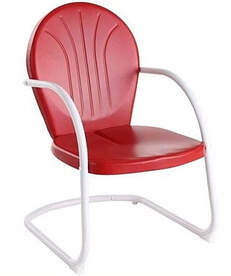 Garden Furniture Garden Furniture Patel thinks that much of his father's resistance to change was due in large part to the consistency that the antiques trade had witnessed over the last forty years. "He definitely had a few ups-and-downs in that time, but for the most part it always came back - and usually to the same type of items." Garden Furniture Hawkes noted that when she and her husband retired in 2006, they had finally pivoted to more kitschy and vintage themed pieces for their shop. "It was actually working really well," she says, "But it was simply time for us to call it a day." Relinquishing control to her daughter in 2007, Sarah Hawkes moved the business even father from traditional mainstream antiques, and began to include vintage clothing and accessories. "It was a super seller right from the start," she said, "...and continues to be so." Later that same year, while hunting down inventory, the younger Hawkes started adding vintage garden furniture on the side, doing a light refurb where necessary, and placing it outside the storefront in the mornings during the summer months. "It was all I could do to keep pace," says Sarah, "by the late afternoon, it was usually sold - especially on sunny days." When Patel took over his father's business in 2004, he began to implement new changes almost immediately. "The first thing I actually did was to open up a wall and put in some windows to bring more light into the shop," says Patel, "The next order of business was to start buying inventory based on what people from my generation were collecting." Patel says it wasn't hard to see that stainless steel influenced themes in the kitchen were leading to mid-century modern décor. "I was literally buying it by the truckload for $20 to $50 back then. Often times on a Sunday I could travel the neighborhoods and find enough free curbside inventory to last a month." Sales were brisk according to Patel, and within a few years he could barely keep up with demand. "It was definitely the right decision for the time," he says. Today, Patel and most other dealers in his neighborhood all carry a very similar stock and inventory of MCM and vintage themed pieces, which Patel says he finds worrying. "It's not like my fathers' generation anymore, where we can sit and rest knowing what's popular today, will probably last a lifetime - it won't." Patel thinks the antiques business is just like any other retail business now, "Unfortunately, we're going to be subject to the whims of popular trends and change like everyone else - whether we like it or not - so we're probably best to start adapting now..." - A.I.A. Staff Writers 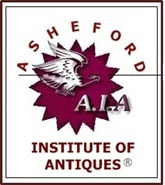 NOTE: For readers seeking more information about the Asheford Institute Of Antiques distance-learning program on professional-level appraising, the study of antiques, collectibles, vintage and mid-century modern items, please click here to visit the school's Home Page. Should you have additional questions about the Asheford program, you can also write to the school at: [email protected] or call the Registrar's Office toll-free at: 1-877-444-4508. |
AIA StaffWe're providing our students and reader's with the latest breaking news on events and happenings that we think might be of interest to both collectors and dealers alike. Including changes within the world of antiques, vintage, collectibles and appraising that might just have an effect on your bottom line. We're also interested in hearing from you - so if you've got a great newsworthy story, let us know, and you just might find it here! Archives
July 2024
CategoriesLegal Disclaimer: Extraneous opinions, statements and comments made by individuals represented within these posts do not necessarily reflect those of the Institute. The publication naming of specific business entities, organizations, and concerns, contained herein, in no way represents an endorsement or recommendation of services or products by the Institute. Publicly identifiable information contained herein (including, but not limited to contact information), has been intentionally limited where possible, due to privacy and legal concerns related to the digital dissemination of information through online means. All views expressed herein are those of their respective owners. The Institute is in no way responsible, financially or otherwise, for the accuracy or validity of statements contained within published posts from sources that originate and appear outside of the written and expressed views of those submitted by the Institute.
|
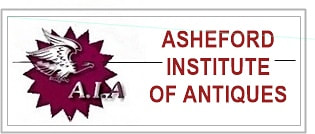
 RSS Feed
RSS Feed
